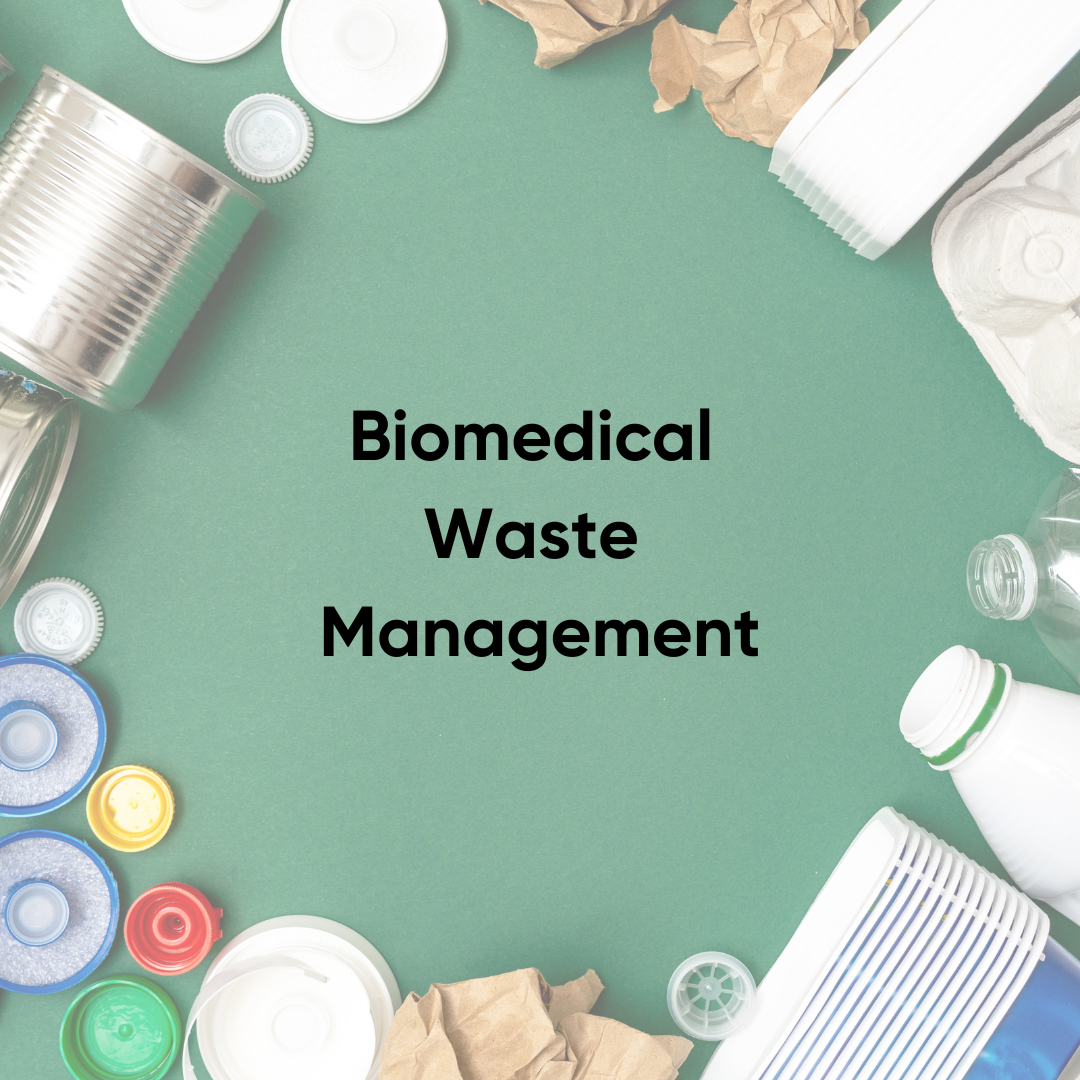Biomedical waste management involves the systematic collection, transportation, treatment, and disposal of biomedical waste to minimize environmental and health risks. Biomedical waste can be solid or liquid.
According to wikipedia, The Bio-medical Waste (Management and Handling) Rules, 1998 and further amendments were passed for the regulation of bio-medical waste management. On 28 March 2016 Biomedical Waste Management Rules (BMW 2016) were also notified by Central Govt. Each state’s Pollution Control Board or Pollution control Committee will be responsible for implementing the new legislation. New regulations affect the distribution of medical waste by medical professionals into their proper receptacles.
Biomedical waste, also known as medical waste or healthcare waste, refers to any waste generated from:
- Healthcare facilities (hospitals, clinics, nursing homes)
- Medical research institutions
- Laboratories
- Pharmaceutical companies
- Healthcare services (dialysis, chemotherapy)
Examples of biomedical waste:
- Infectious waste (e.g., contaminated syringes, gloves)
- Pathological waste (e.g., human tissues, organs)
- Sharps waste (e.g., needles, scalpels)
- Pharmaceutical waste (e.g., expired or contaminated medications)
- Non-infectious waste (e.g., paper, plastic)
Objectives of Biomedical Waste Management:
- Prevent infection transmission
- Reduce environmental pollution
- Protect healthcare workers and patients
- Comply with regulations
Methods of Biomedical Waste Management:
- Segregation: Separate waste into categories (infectious, non-infectious, etc.)
- Packaging: Use designated containers and bags
- Labeling: Clearly label waste containers
- Transportation: Use dedicated vehicles or containers
- Treatment:
- Incineration
- Autoclaving
- Chemical disinfection
- Landfill disposal (non-infectious waste)
- Disposal: Ensure proper disposal in accordance with regulations
Types of Biomedical Waste Treatment:
- Incineration: Burning waste at high temperatures
- Autoclaving: Using steam sterilization
- Chemical disinfection: Using disinfectants
- Plasma gasification: Converting waste into energy
- Landfill disposal: Burying non-infectious waste
Regulations and Guidelines:
- World Health Organization (WHO) guidelines
- US Environmental Protection Agency (EPA) regulations
- Occupational Safety and Health Administration (OSHA) guidelines
- Local and national regulations (e.g., India’s Biomedical Waste Management Rules, 2016)
Challenges:
- Inadequate infrastructure
- Lack of training and awareness
- Insufficient funding
- Non-compliance with regulations
The Hidden Dangers of Biomedical Waste: Why Proper Management Matters
As healthcare professionals, we’re trained to prioritize patient safety and well-being. But have you ever stopped to think about the potential risks lurking in the trash? Biomedical waste, if not managed properly, can pose serious threats to human health, the environment, and our communities.
The Alarming Reality – Biomedical waste includes everything from used syringes and gloves to contaminated tissues and pharmaceuticals. If not disposed of correctly, these materials can:
- Spread infectious diseases like HIV, HBV, and HCV
- Contaminate soil, water, and air
- Harm healthcare workers, patients, and communities
- Fuel antibiotic resistance
The Consequences of Complacency – In 2019, a study found that improper biomedical waste disposal led to:
- 16 million hepatitis B infections
- 2.4 million hepatitis C infections
- 150,000 HIV infections
These numbers are staggering. But it’s not just about statistics – it’s about people.
Real Stories, Real Consequences – In India, a family lost their 10-year-old son to a fatal infection contracted from improperly disposed medical waste. In the US, a nurse was infected with HIV after accidentally pricking herself with a used needle.
So, what can we do?
- Segregate and categorize waste properly.
- Invest in proper packaging and labeling.
- Ensure safe transportation and storage.
- Implement effective treatment and disposal methods.
- Regularly monitor and evaluate waste management practices.
A Collective Responsibility
Biomedical waste management isn’t just a healthcare issue – it’s a societal one. We must work together to:
- Educate and train healthcare professionals
- Implement robust policies and regulations
- Invest in innovative waste management technologies
Biomedical Waste Management Conclusion
Proper biomedical waste management isn’t just a moral imperative; it’s a matter of life and death. By prioritizing safety, sustainability, and responsibility, we can create a healthier, safer world for all.
Sources:
- World Health Organization (WHO)
- Centers for Disease Control and Prevention (CDC)
- Environmental Protection Agency (EPA)
